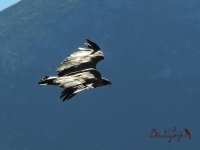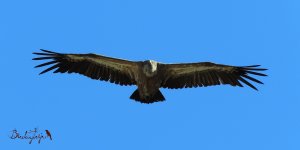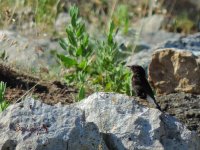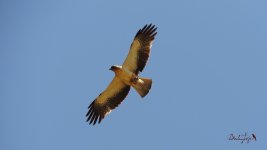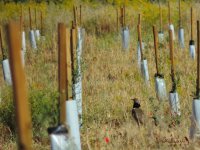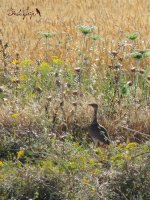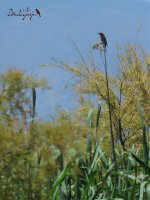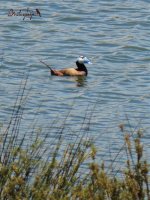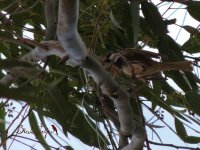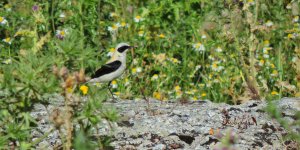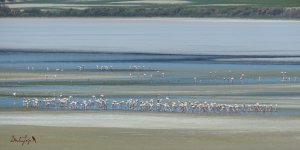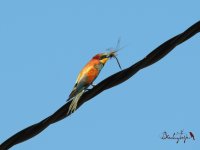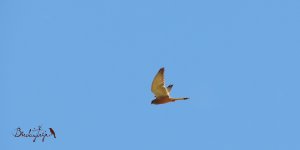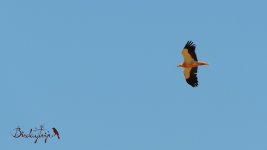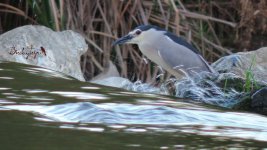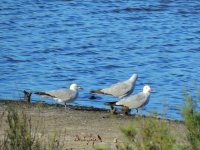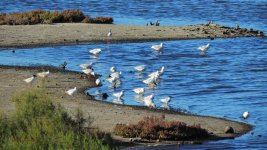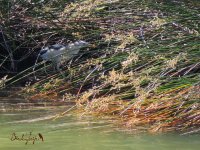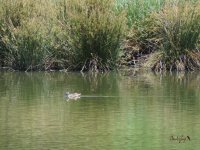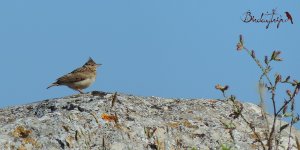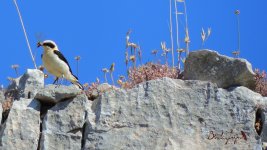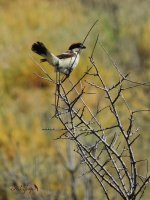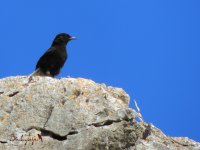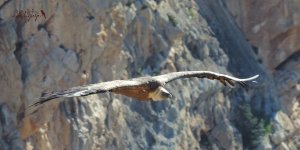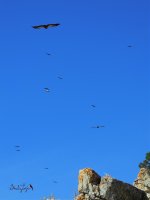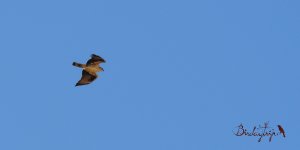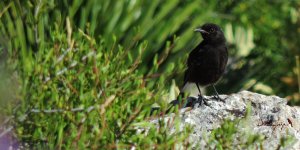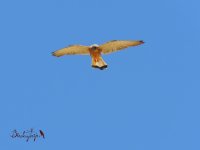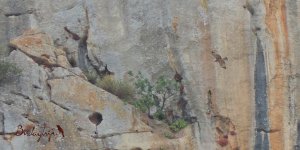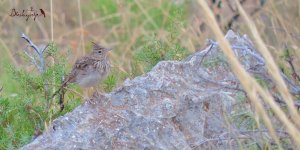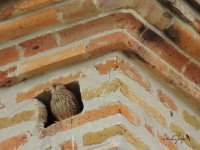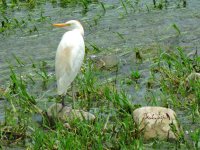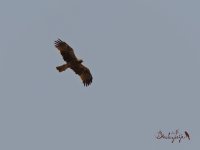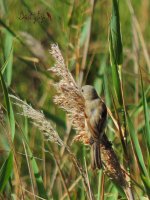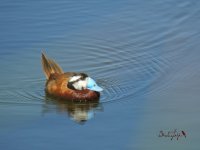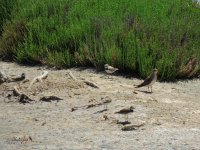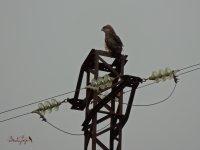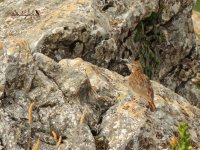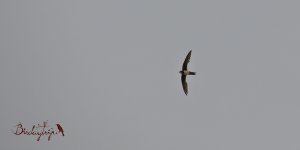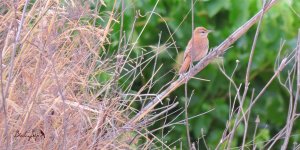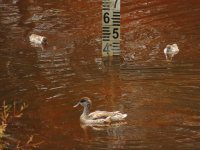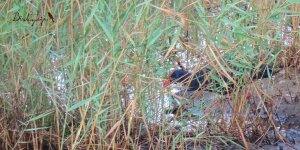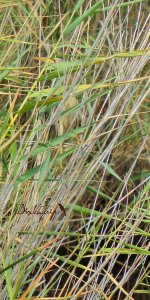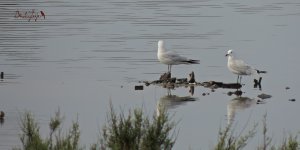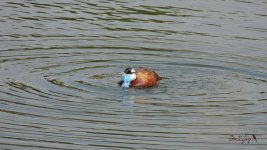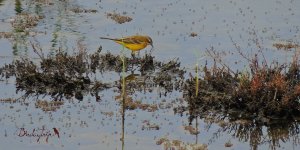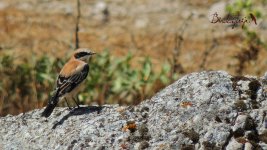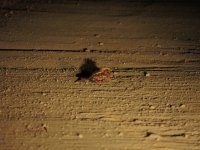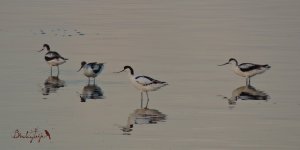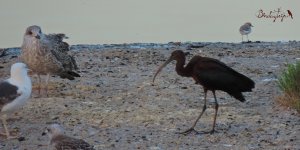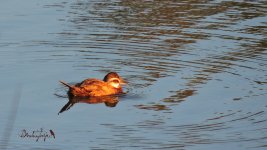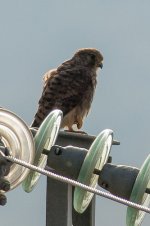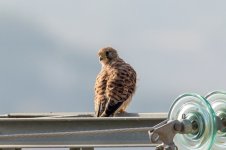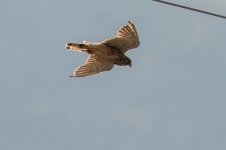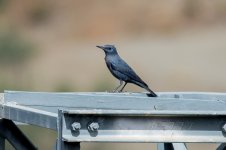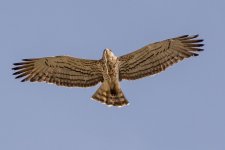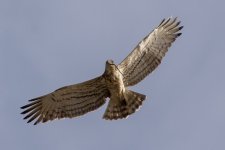100+ Birds Costa del Sol Bird Watching Challenge (2016.07.20)
The Malaga Team meets again for a 100+ challenge in a very hot and difficult July...
Barbara, Derek, Mick and I were very concerned about achieving our 100 species target in July, possibly the most difficult month for birding after the breeding season, the heat at the countryside and before the bulk of migration starts in the second half of August. Despite all these factors we keep committed to show how rewarding Malaga province is for birders at any time of the year.
We decided to improve our chances with an early visit to Zapata before our traditional start at Montes de Malaga. Our main goal was nightjars. Unfortunate and surprisingly, they did not showed up in the tracks, though we could see some other birds which I will not mention as they are not nocturnal, the way we found them was not very “natural” by driving a car in the night, and we found them somewhere else during the day, except one, whose visual contact is always difficult and joined Barbara and Derek’s list for Zapata for the first time: a Quail!
The atmosphere at Montes de Malaga was very different from that in the last months; there was complete silence up there. It was just broken before dawn by a very short but close song by... a Red-necked Nightjar! The typical explosion of sound at the break of dawn was a very weak one this time with calls dominating songs, being Blackbirds the first to get up.
In spite of this quietness, all the typical forest birds like Firecrest, tits, Nuthatch, Green and Great Spotted Woodpeckers, Common Crossbill, Hawfinch, Bonelli’s Warbler, Sparrowhawk, etc., flew or called around us to have their tick on the list. That was a great start!
Our second step was doing well in a mountain environment, the so recently appointed UNESCO Word Heritage: El Torcal. Will all the illustrious little summer visitors to the place be available for us? Let’s see. We saw the first Griffon Vultures from Villanueva. We stopped near the road to the visitors centre to watch a fantastic Short-toed Eagles sitting on a pylon when we spotted a Spectacled Warbler on a broom, Woodchat Shrike with juveniles, and Crag Martins and Pallid Swifts in the cliffs. Another stop by the road gave us Melodious Warbler, Blue Rock Thrush, Black-eared Wheatear, Nightingale and Thekla Lark. Once at the visitors centre, it did not take long to spot Alpine Swift, Rock Bunting, Rock Sparrow and Subalpine Warbler. El Torcal is not only World Heritage, but Birds Heritage too!
We were doing really great, let’s go on to Fuente Piedra! A few drops fell while leaving El Torcal, and the Antequera Valley looked very dark and cloudy. That is very welcome in the middle of the summer. Soon, the best observation of the day took place: two males of Rufous Bush Robin singing in a vineyard next to the road! It was really good to see these birds that were once so common in Malaga and have become so scarce in the last years.
Once at Fuente de Piedra, the results could not have been better: apart from the minimum (but a few hundred!) stock of Greater Flamingos, we got Hoopoe, Olivaceus Warbler, Cattle Egret, Red-crested Pochard, White-headed Duck, Black-winged Stilt, Avocet, Black-tailed Godwit, Tawny Pipit and Zitting Cisticola. We also had surprises like the first Lesser Black-backed Gull of the season, a female Ferruginous Duck and a young Night Heron hiding in the reeds near the Laguneto. We saw the first big flock of moving Black Kites and a few Stone Curlews on our way out of the visitors centre.
We stopped for lunch under an Olive Tree at 35ºC; all the morning clouds had completely disappeared. Life can also be great without air conditioning! By that time we had already recorded the unbelievable amount of 95 species, it was almost done!
As we all expected, the farmlands under such a heat wave were not productive at all. Just a female Marsh Harrier near Campillos for the list.
The visit to the Peñarrubia cliff produced a big flock of vultures, the Peregrine Falcon and a pair of Great-crested Grebes in the reservoir. Only two birds away from target! As we did so good at El Torcal, we decided to skip our second mountain environment in the tour (El Chorro) and head straight to Rio Grande.
First Little Egret (99) and... was that a Purple Heron in the distance? If so, Barbara would have lost the 100 game as she bet for Bee-eater, which was the next bird to come out! But no, it was a Grey Heron that we had already seen in Fuente de Piedra, so Barbara won the 100 game with her Bee-eater. Grey Wagtail and Turtle Dove completed the list at Rio Grande.
We celebrated this great birding day at Cohete, near Zapata, our meeting point this morning, and we finished the day with a short visit to the ditch, where Common Waxbill, Monk Parakeet and Reed Warbler rounded off a list of 106 birds.
Great birding in the best possible company!
Have a look at the complete list of birds here:
http://www.birdaytrip.es/blog/item/...ge-malaga-andalucia-southern-spain-2016-07-20




